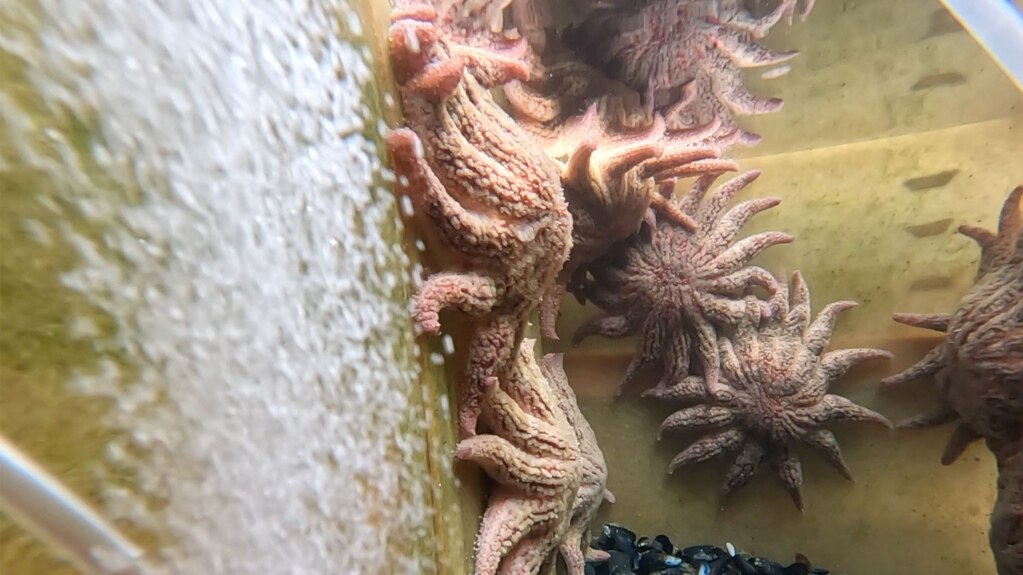A sea creature known as the sunflower sea star was once plentiful in the Pacific Ocean along the coast of North America. They used to be found in the waters along the coast of Mexico’s Baja peninsula all the way to Alaska.
But in the last 10 years, about 90 percent of them have died.
Scientists at the University of Washington are trying to understand why the sea stars died. To do so, they are growing them in a lab.
The sickness that killed them is known as sea star wasting syndrome.
Jason Hodin is the top researcher at the Friday Harbor Marine Lab. He said the sickness might have happened because of warmer water caused by climate change.
The lab is on San Juan Island, northwest of Seattle. They have nearly 150 sea stars between the ages of one and three. They also have around 5,000 sea stars that are at the larvae stage. They also have 16 adult sea stars transferred from ocean waters.
Hodin called his lab the world’s only “captive breeding program for the world’s only endangered sea star.” Endangered means at risk of dying out.
The university’s neuroscience department is also working on the study. They are trying to find out if warmer water changes the way the stars move.
The group is using special cameras to see how the stars move and to create 3-dimensional pictures that can show differences. The pictures would show differences even with small changes to their environments – such as a small water temperature change.
So far, researchers think the sea stars are able to survive in warmer water. That, Hodin said, is a good thing.
“If sunflower stars are going to recover in the wild with or without human assistance,” Hodin said, “they're going to be doing so in a change in climate.”
I’m Dan Friedell.

